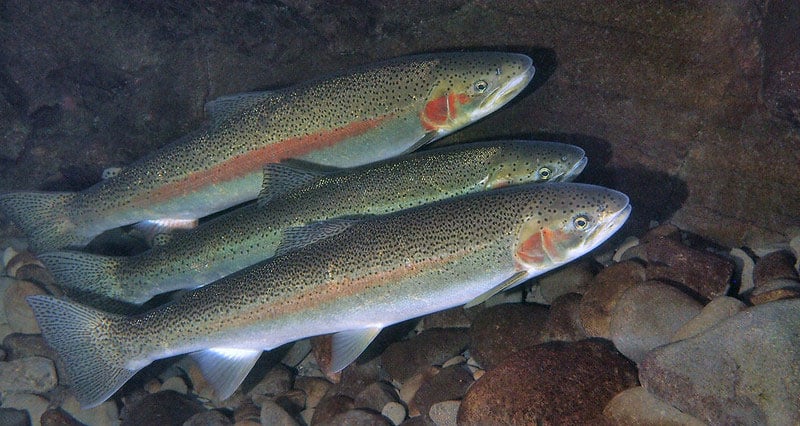
A year following a wildfire that torched an entire stream watershed had no adverse effect on trout living in the stream. This was so even though the fire devastated important riparian zone trees needed to maintain stream temperatures needed by trout.
Oregon State University did the wildlife-trout research, and it offers new understanding about how steelhead, cutthroat, and rainbow trout can tolerate considerably higher water temperatures than previously believed.
“It’s crucial we improve understanding of factors that influence how fish respond to postfire changes in stream temperature,” says study leader Dana Warren. “The loss of streamside cover during a fire can lead to substantial increases in stream temperature. But effects of changes to stream thermal regimes on salmonid fishes can be complicated. The fish in this system proved to be quite resilient to these increased temperatures.”
The research was done on the 5,000-acre Hinkle Creek Paired Watershed, a second-growth timber area in Douglas County, located in west-central Oregon, south of Eugene. The Archie Creek Fire consumed 131,542 acres in the county in Sept. 2020, including the Hinkle Creek watershed.
While research showed an increase in fish population in the study area that following summer, scientists say that doesn’t necessarily mean that wildfires have no threat to trout.
“Acute mortality is important, but isn’t the only impact (of fire),” says Warren, a researcher in the OSU colleges of Forestry and Agricultural Sciences. “There may be sublethal effects, like a weakened ability to grow or reproduce. Given the short-term nature of our observations, more research is needed on the mechanisms that drive fish responses to warmer water temperatures, and long-term monitoring is also needed.”
The Hinkle Creek area has been studied extensively, with abundant historical data on stream flow, water temperature, sediment, nutrients and fish, according to study co-author Kevin Bladon. So repeat studies of the creek watershed will offer extensive insight into what wildfire does to native fish, such as trout, over the long term.
Researchers expected trout abundance to decline in Hinkle Creek through 2021, but it didn’t. Instead, it increased.
Trout surviving well in a stream with high water temperatures following a fire is not unprecedented, say researchers. But most of the studies with those types of findings are from warmer regions with more fire frequency than the Cascade Mountains.
“Although temperatures increased beyond what’s considered the salmonids’ optimal threshold in the Cascades, there were no classically warm-warm species present, so competition from them was not an issue,” Warren said. “A combination of other factors also could have contributed to the persistence of salmonids: high abundance of cooler microhabitats created by groundwater discharge; physiological recovery at night when temperatures were cooler; and an increase in food availability. More investigation is needed to know for sure.”








